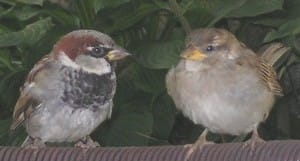Neonicotinoids are aimed at insects, but they’re affecting other animals too, study says.
National Geographic
by Jason Bittel
 |
Pesticides don’t just kill pests. New research out of the Netherlands provides compelling evidence linking a widely used class of insecticides to population declines across 14 species of birds.
Those insecticides, called neonicotinoids, have been in the news lately due to the way they hurt bees and other pollinators. (Related: “The Plight of the Honeybee.”)
This new paper, published online Wednesday in Nature, gets at another angle of the story—the way these chemicals can indirectly affect other creatures in the ecosystem.
Scientists from Radboud University in Nijmegen and the Dutch Centre for Field Ornithology and Birdlife Netherlands (SOVON) compared long-term data sets for both farmland bird populations and chemical concentrations in surface water. They found that in areas where water contained high concentrations of imidacloprid—a common neonicotinoid pesticide—bird populations tended to decline by an average of 3.5 percent annually.
“I think we are the first to show that this insecticide may have wide-scale, significant effects on our environment,” said Hans de Kroon, an expert on population dynamics at Radboud University and one of the authors of the paper.
Second Silent Spring?
Pesticides and birds: If this story sounds familiar, it’s probably because Rachel Carson wrote about it back in 1962. Carson’s seminal Silent Spring was the first popular attempt to warn the world that pesticides were contributing to the “sudden silencing of the song of birds.”
“I think there is a parallel, of course,” said Ruud Foppen, an ornithologist at SOVON and co-author of the Nature paper.
Foppen says that while Carson battled against a totally different kind of chemicals—organophosphates like DDT—the effects he’s seeing in the field are very much the same. Plainly stated, neonicotinoids are harming biodiversity.
“In this way, we can compare it to what happened decades ago,” he said. “And if you look at it from that side, we didn’t learn our lessons.”
How Neonicotinoids Work
In the past 20 years, neonicotinoids (pronounced nee-oh-NIK-uh-tin-oyds) have become the fastest growing class of pesticides. They’re extremely popular among farmers because they’re effective at killing pests and easy to apply.
Instead of loading gallons and gallons of insecticide into a crop duster and spraying it over hundreds of acres, farmers can buy seeds that come preloaded with neonicotinoid coatings. Scientists refer to neonicotinoids as “systemic” pesticides because they affect the whole plant rather than a single part. As the pretreated seed grows, it incorporates the insecticide into every bud and branch, effectively turning the plant itself into a pest-killing machine.
This lock, stock, and barrel approach to crop protection means that no matter where a locust or rootworm likes to nibble—the root, the stem, the flower—the invader winds up with a bellyful of neurotoxins.
“The plants become poison not only for the insects that farmers are targeting, but also for beneficial insects like bees,” said Jennifer Sass, a senior scientist with the Natural Resources Defense Council (NRDC) who’s been building a case against the widespread use of neonicotinoids. The pesticide’s top-to-bottom coverage means the plants’ flowers, pollen, and nectar are all poisonous too.
Worse still, Sass says, neonicotinoids can persist in the soil for years. This gives other growing things a chance to come into contact with and absorb the chemicals.
“So they actually end up in plants that grow on the sides of fields and that were never meant to be targeted,” she said.
Bye Bye Birdie
The new Nature paper shows strong evidence that neonicotinoids are dangerous even if not ingested.
The study looked at population statistics for over a dozen species of birds common to farmlands in the Netherlands. Most of these species are dependent on insects for all or part of their diet, though some also munch on seeds and grains. This means that there are two ways neonicotinoids could be harming the Netherlands’ birds.
The first is ingestion. Studies have shown that while neonicotinoids are commonly considered to be safer for mammals and birds than for insects, they can still be lethal in high enough doses. And the best way to get a concentrated dose of neonicotinoids is to eat seeds coated with them. A 1992 study by the U.S. Environmental Protection Agency found that sparrows have difficulty flying after consuming a tiny amount of imidacloprid, and become immobile at higher doses.
The second way neonicotinoids can affect birds is by eliminating their food sources. Since these pesticides kill target and nontarget species alike, there are fewer flies, grasshoppers, stinkbugs, and caterpillars for the birds to feast on.
Causation vs. Correlation
While the new paper shows a correlation between high concentrations of neonicotinoids and declining bird populations, it doesn’t claim the pesticides are a direct cause of the decrease.
To make sure the correlation wasn’t some sort of coincidence, the team analyzed a number of alternative explanations.
Caspar A. Hallmann is an ornithologist and population ecologist at SOVON and Radboud University. As the lead author of the Naturepaper, he explained that there are numerous causes for population declines in birds, from changes in the kinds of crops planted in any given year and the amount of fertilizer used to the urbanization of former farmland. But when the team looked at the data, none of these explanations held up.
Hallmann said that, as with any correlative study, caution is a watchword. “But still,” he says, “we think we have a line of evidence that is building up.”
Pesticide Maker Disagrees
Bayer CropScience, the primary manufacturer of imidacloprid, defends the use of neonicotinoids. In a statement responding to Hallmann and his colleagues, the company writes: “Neonicotinoids have gone through an extensive risk assessment which has shown that they are safe to the environment when used responsibly according to the label instructions.”
The statement concludes by saying that the Nature paper fails to establish a causal link, and therefore “provides no substantiated evidence of the alleged indirect effects of imidacloprid on insectivorous birds.”
“Indeed, we showed a negative correlation, which is already very alarming,” the Dutch scientists said in response to Bayer CropScience’s critique. “Showing causal links at the ecosystem scale would require landscape-scale experiments,” which would be “difficult and probably very unethical.”
A Third View
The Dutch scientists say neonicotinoids are negatively affecting bird populations. Bayer CropScience says neonicotinoids are safe when used correctly. Whom do we trust?
Maybe an independent group that just completed a review of over 800 scientific studies on the effects of neonicotinoids on wildlife. The Task Force on Systemic Pesticides, composed of 29 multidisciplinary scientists, recently released its landmark report titled Worldwide Integrated Assessment of the Impact of Systemic Pesticides on Biodiversity and Ecosystems.
Overall, the scientists concluded that even when neonicotinoids were used according to the guidelines on their labels and applied as intended, the chemicals’ levels in the environment still frequently exceeded the lowest levels known to be dangerous for a wide range of species—and were “thus likely to have a wide range of negative biological and ecological impacts.”
Not Just Bees Anymore
David Gibbons, a member of the task force and head of the RSPB Centre For Conservation Science, the largest nature-conservation charity in Europe, explained that many European countries have already restricted three types of neonicotinoids—including imidacloprid—because of the mounting evidence that they harm bees.
(As of yet, similar protections do not exist in the U.S. Though not for lack of trying—the NRDC filed a legal petition just this week asking the EPA to withdraw its approval of neonicotinoid pesticides.)
“Over the last decade, there have been a number of mass die-offs of bees in several European countries,” said Gibbons.
The process of planting corn can actually dislodge the neonicotinoid coating, which tractors then kick up into the air with the dust from fields.
“These clouds of dust contain very high concentrations of neonicotinoids,” says Gibbons, “and are instantly lethal to bees.”
But part of the goal of the Worldwide Integrated Assessment report is to show that bees aren’t the only animals affected. The task force presents evidence that earthworms, aquatic invertebrates, lizards, fish, and many other animals are suffering ill effects as a result (either direct or indirect) of systemic pesticides.
Gibbons says it’s hard to say whether we’ve entered a second “silent spring.”
“However,” he adds, “[neonicotinoid] use is now so widespread—nearly 40 percent of the global insecticide market—that there are valid reasons to be worried.”

